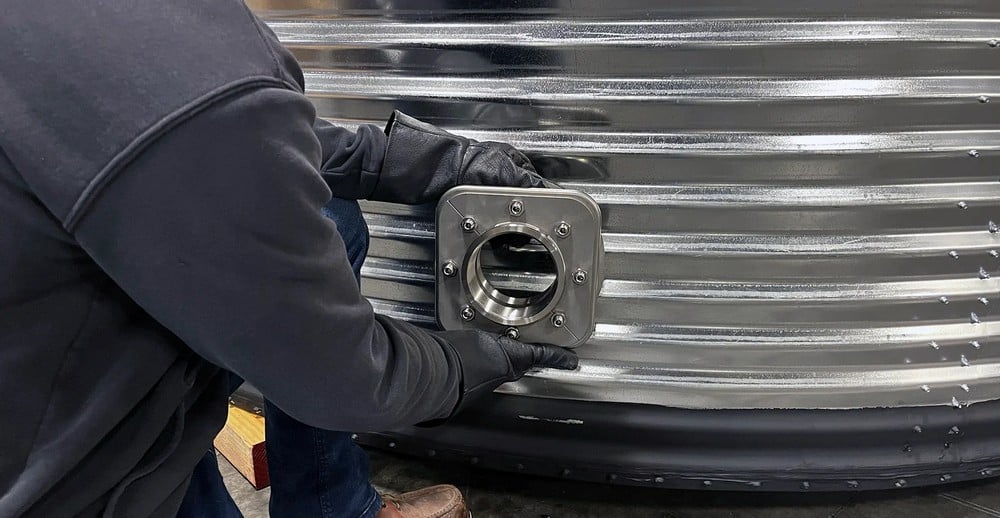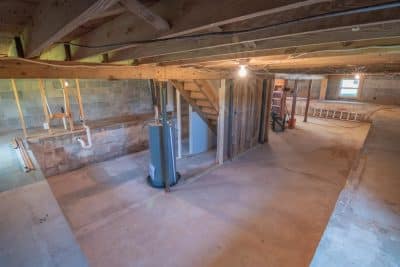
When you’re working on a construction project, water is one of those things you just can’t afford to overlook. Whether it’s used for mixing concrete, powering equipment, or even for workers on-site, reliable water supply systems are a must. But here’s the thing: water doesn’t do us any good if it’s leaking all over the place. A small leak might seem like no big deal, but it can have a huge impact on your project. So, what’s the solution? Leak-proof connections.
Let’s dive into why these connections are so important and how they can make or break your water supply system on a construction site. Spoiler alert: it’s all about keeping things running smoothly, saving time, and preventing costly headaches.
Understanding the Role of Tank Fittings in Construction
First off, let’s talk about what tank fittings actually are. Simply put, they’re the connectors that make sure your water supply system works properly. These fittings come in all shapes and sizes, valves, pipes, couplings, adapters, you name it. They’re what allow you to hook up water tanks to pipes, pumps, or other equipment on-site. Without them, your water would have no way to get where it’s needed.
But here’s the key point: if those fittings aren’t up to par, it’s like putting a leaky hose in your car’s fuel tank. The job won’t get done right, and things will go wrong quickly. Whether it’s a small drip or a full-blown water burst, having high-quality, leak-proof tank fittings is the only way to ensure everything runs like a well-oiled machine.
Think about it: when you’re on a tight construction timeline, the last thing you want is a slow, leaky pipe delaying progress. That’s why the right tank fittings are critical—they make sure water is where it’s needed, when it’s needed, with no mess in between.
Choosing the Right Tank Fittings for Leak Prevention
You might be wondering, “How do I choose the right fittings for my construction project?” Great question.
When selecting tank fittings, there are a few things to keep in mind. First, make sure the materials are compatible with your water source. For example, if you’re working with a high-pressure system or using certain chemicals, you’ll need fittings that can handle those specific conditions. Don’t just go for whatever’s cheapest, opt for something that’s built to last.
You also want to consider the type of fitting. For instance, flanged fittings are great for high-pressure systems, while threaded fittings are better for lower-pressure applications. The key is to match the fitting type with the needs of your system to avoid any issues later.
Another important point? Installation. A fitting might look good, but if it’s not installed properly, it won’t work. You need to make sure that the fittings are correctly sealed and fastened to prevent any future leaks. This is where working with experienced professionals can really make a difference. They’ll know how to get the job done right, ensuring that everything is leak-proof from the start.
Speaking of getting the job done right, there are also custom tank fitting solutions available that can be tailored specifically to your project’s needs. These solutions take into account the size, pressure requirements, and materials involved, ensuring that the connections are perfect for your unique setup. It’s an investment that pays off by reducing the risk of leaks and improving the overall efficiency of your system.
The Consequences of Leaky Connections
It might be tempting to think a small leak won’t hurt anything, but let’s be real: leaks can wreak havoc. Imagine this: you’re working on a tight deadline, everything is coming together, and then, bam, a leak starts in your water supply system. What happens? Everything slows down. Not only do you need to stop to fix the leak, but the water you’re losing could also be wasting precious resources, and that adds up fast.
Now, let’s talk about the environment. Water wastage is a serious issue, and leaks only make it worse. When a connection leaks, you’re not just losing water; you’re also potentially polluting the site, especially if the water contains chemicals or other materials.
In a world that’s increasingly focused on sustainability, it’s important to take responsibility and ensure that your construction site’s water system is as efficient as possible.
Oh, and did I mention the safety risks? A slow, constant leak can lead to water pooling around machinery or electrical equipment, creating slip hazards and potentially dangerous conditions. So, do you really want to take that risk? Of course not.
How Leak-Proof Connections Ensure System Reliability
Now, let’s talk about how having leak-proof connections can save you time, money, and a lot of stress. The main benefit? Reliability.
When you use high-quality, leak-proof tank fittings, you’re setting yourself up for success. These fittings ensure that once you install them, the system works seamlessly and without any unwanted surprises. No more worrying about sudden leaks or faulty connections. Once your system is in place, you can trust that the water will flow where it’s supposed to, and you won’t have to stop mid-project to troubleshoot.
This kind of reliability in tank fittings doesn’t just save you from stress, it saves you money too. When things are leaking, you’re wasting water, potentially damaging materials or structures, and spending more money on repairs or replacements. On the flip side, when you get things right from the start with leak-proof connections, you’ll avoid those unexpected expenses. In the long run, using quality fittings helps your project stay on track and within budget.
Plus, with the right fittings in place, the whole water supply system will work more efficiently. You’ll have better water flow, improved pressure control, and fewer chances of blockages or failures down the line. All of that leads to smoother construction processes and fewer delays.
Best Practices for Maintenance and Monitoring
Once you’ve got your leak-proof tank fittings installed, the next step is keeping them in tip-top shape. Regular maintenance is key to avoiding leaks in the first place.
Start by inspecting your tank fittings regularly. Check for any signs of wear, corrosion, or loose connections. If you spot any issues, address them right away before they turn into bigger problems. It’s always easier to fix a small issue than to deal with a major leak later.
You should also pay attention to how the system is performing. Is the water flow steady? Is there any noticeable drop in pressure? If something seems off, it might be time to check the fittings or call in a professional for a more thorough inspection.
Additionally, make sure the surrounding area is kept dry and clean. A build-up of dirt or debris can cause fittings to deteriorate over time. Taking a few minutes each week to clean the area can extend the life of your fittings and keep everything running smoothly.
Finally, don’t forget to document the maintenance. Keeping a log of inspections, repairs, and any upgrades will help you stay on top of your system’s health and ensure you catch any issues before they turn into full-blown emergencies.








